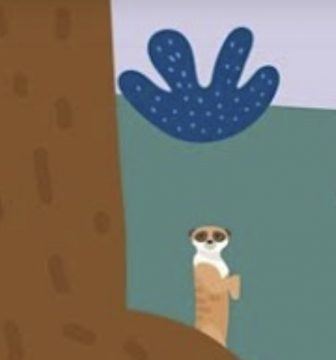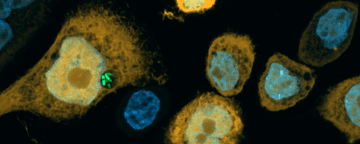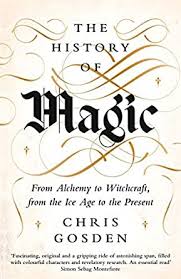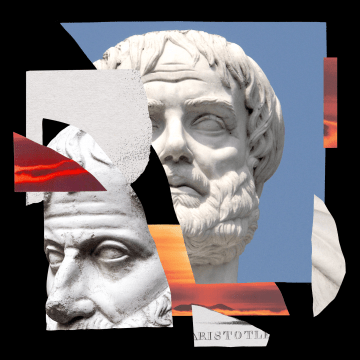Ruth Williams in The Scientist:
 Studies of blood samples from four rheumatoid arthritis patients collected over years has led to the discovery of an RNA profile that predicts an imminent flare-up of symptoms, according to a report in the New England Journal of Medicine today (July 15). The transcriptional signature also indicates that a type of fibroblast previously linked to the disease becomes enriched in the blood before migrating to the joints to wreak havoc. “The work is clearly a breakthrough in how patients with [rheumatoid arthritis] might be managed in the future,” Lawrence Steinman of Stanford University writes in an email to The Scientist. If such an RNA test were commercially developed, then “via a home test involving a mere finger stick, markers that precede a flare [would be] identified. This would allow the individual to consult with their physician and take necessary measures to avert such a flare,” continues Steinman, who studies autoimmune diseases but was not involved in the study.
Studies of blood samples from four rheumatoid arthritis patients collected over years has led to the discovery of an RNA profile that predicts an imminent flare-up of symptoms, according to a report in the New England Journal of Medicine today (July 15). The transcriptional signature also indicates that a type of fibroblast previously linked to the disease becomes enriched in the blood before migrating to the joints to wreak havoc. “The work is clearly a breakthrough in how patients with [rheumatoid arthritis] might be managed in the future,” Lawrence Steinman of Stanford University writes in an email to The Scientist. If such an RNA test were commercially developed, then “via a home test involving a mere finger stick, markers that precede a flare [would be] identified. This would allow the individual to consult with their physician and take necessary measures to avert such a flare,” continues Steinman, who studies autoimmune diseases but was not involved in the study.
Rheumatoid arthritis, in which the body’s immune system attacks the joints to cause swelling, stiffness, and pain, exhibits a waxing and waning of symptoms, as do many other autoimmune diseases. Even with treatment to suppress certain immune cells or cytokines, it is common for a patient to experience a couple of relapses each year, says study author Dana Orange, a clinical rheumatologist and researcher at Rockefeller University in the laboratory of Robert Darnell. Relapses in the disease are debilitating and can make life hard to plan, explains Orange. Patients “just don’t know when they are going to be blind-sided and incapacitated with a flare,” she says. Orange, Darnell, and colleagues therefore sought a way to predict such occurrences. Being a dynamic molecule, RNA “lends itself to profiling changes over time,” says Darnell, whose research focuses on RNA regulation in autoimmune and other diseases. “What we wanted to do,” he says, “was to design a study where we could have the RNA before a patient gets sick with a flare . . . to try and get signatures of what might be the antecedents.”
To this end the team recruited patients, via an ad in a newspaper, who were willing to collect tiny samples of their own blood—a few drops via a finger stick—each week and keep diaries of their symptoms. The patients also had clinical evaluations once a month. The team then sequenced the messenger RNA content of a selection of the blood samples—those representing baseline conditions and the weeks immediately prior to, during, and after a flare—to see whether and how the transcriptomes varied with the waxing and waning of symptoms. A total of 162 samples, taken from four patients over the course of one to four years, were sequenced and analyzed computationally. When they looked at the weeks preceding a flare up, “what jumped out was that something changed from the baseline,” says Darnell. Two weeks prior to a relapse, the team detected a change in the RNA profile that was consistent with an increased abundance of immune cells. “That gave us a hint that we were on the right track and that was exciting,” says Darnell, “but the big excitement came when we were looking at week -1.”
“There was a unique set of genes that were unexpected—they had signatures of stem cells and mesenchymal cells,” Darnell continues, and “it was not clear exactly what to make of that.”
More here.
 There’s a pivotal scene in the 2012 film The Hobbit: An Unexpected Journey when Gandalf, Bilbo Baggins, and a company of dwarves are chased by orcs through a classic New Zealand landscape. For Northwestern University neuroscientist and engineer Malcolm MacIver, the scene is an excellent example of the kind of patchy landscape—dotted with trees, bushes, boxers, and rolling knolls—that may have shaped the evolution of higher intelligence in humans, compared to their aquatic ancestors. Specifically, it falls within a “Goldilocks zone”—not too sparse, and not too dense—that favors strategic thinking and planning ahead, leading to the development of “planning” circuitry in the human brain, according to MacIver’s most recent paper, published in Nature Communications.
There’s a pivotal scene in the 2012 film The Hobbit: An Unexpected Journey when Gandalf, Bilbo Baggins, and a company of dwarves are chased by orcs through a classic New Zealand landscape. For Northwestern University neuroscientist and engineer Malcolm MacIver, the scene is an excellent example of the kind of patchy landscape—dotted with trees, bushes, boxers, and rolling knolls—that may have shaped the evolution of higher intelligence in humans, compared to their aquatic ancestors. Specifically, it falls within a “Goldilocks zone”—not too sparse, and not too dense—that favors strategic thinking and planning ahead, leading to the development of “planning” circuitry in the human brain, according to MacIver’s most recent paper, published in Nature Communications.
 When moral visions clash, it’s common for people to assume their opponents have bad motives rather than different perspectives. And it’s usually wrong. If you advocate some policy you believe will save lives, whether it’s a plan for fighting COVID-19, increasing health-care coverage, or reducing homicide, your opponents probably don’t oppose your plan because they want more people to die. They may think their own plan will save lives, or they may be concerned about other values entirely. You may very well have fundamental moral disagreements with them, but the thing you hate most about their position probably isn’t what’s driving them.
When moral visions clash, it’s common for people to assume their opponents have bad motives rather than different perspectives. And it’s usually wrong. If you advocate some policy you believe will save lives, whether it’s a plan for fighting COVID-19, increasing health-care coverage, or reducing homicide, your opponents probably don’t oppose your plan because they want more people to die. They may think their own plan will save lives, or they may be concerned about other values entirely. You may very well have fundamental moral disagreements with them, but the thing you hate most about their position probably isn’t what’s driving them. Cyan (pronounced SIGH-ann) is the color that emanates from a calm sea not far offshore on a clear day as the blue of the sky is reflected in salt water awash over yellow sand. You can see it for yourself in postcards mailed from coastal resorts or, if you are at a resort, from a vantage point somewhere above the beach—from a cliff, say, or lacking cliffs, from atop a palm tree. Various shades of cyan form the background to the ad for Swarovski (whatever that is) on page 13 of the April 2005 issue of Gourmet magazine. To create a highly saturated cyan on your own, you might pour 1/4 cup of Arm & Hammer’s Powerfully Clean Naturally Fresh Clean Burst laundry detergent onto the whites in your next load of wash (presumably Arm & Hammer adds the pigment to its product in order to provoke association with what we imagine to be the pristine purity of tropical seas). Also, you might search for “cyan” at wikipedia.org, where a resplendent rectangle of the color is on display, along with a succinct definition: “Cyan is a pure spectral color, but the same hue can also be generated by mixing equal amounts of green and blue light. As such, cyan is the complement of red: cyan pigments absorb red light. Cyan is sometimes called blue-green or turquoise and often goes undistinguished from light blue.”
Cyan (pronounced SIGH-ann) is the color that emanates from a calm sea not far offshore on a clear day as the blue of the sky is reflected in salt water awash over yellow sand. You can see it for yourself in postcards mailed from coastal resorts or, if you are at a resort, from a vantage point somewhere above the beach—from a cliff, say, or lacking cliffs, from atop a palm tree. Various shades of cyan form the background to the ad for Swarovski (whatever that is) on page 13 of the April 2005 issue of Gourmet magazine. To create a highly saturated cyan on your own, you might pour 1/4 cup of Arm & Hammer’s Powerfully Clean Naturally Fresh Clean Burst laundry detergent onto the whites in your next load of wash (presumably Arm & Hammer adds the pigment to its product in order to provoke association with what we imagine to be the pristine purity of tropical seas). Also, you might search for “cyan” at wikipedia.org, where a resplendent rectangle of the color is on display, along with a succinct definition: “Cyan is a pure spectral color, but the same hue can also be generated by mixing equal amounts of green and blue light. As such, cyan is the complement of red: cyan pigments absorb red light. Cyan is sometimes called blue-green or turquoise and often goes undistinguished from light blue.”
 Even though the year is only a little more than halfway gone, 2020 has understandably been filled with talk about the “solace” of reading. More so than in any previous year in living memory, readers have been diving into books in order to escape the harsh realities of the outside world. In her new book “Austen Years: A Memoir in Five Novels,” award-winning author Rachel Cohen writes of exactly this kind of solace-seeking. While dealing with her father’s death and the birth of her daughter, Cohen found herself in a readerly relationship with the novels of Jane Austen that was more fixed, almost more compulsory, than anything she’d previously imagined for herself. In the opening pages, she muses that “if you had told me that years were coming when I would hardly pick up another serious writer with any real concentration, that the doings of a few English families would come to define almost the entire territory of my reading imagination, and that I would reach a point of such familiarity that I would simply let Austen’s books fall open and read a sentence or two as people in other times and places might use an almanac to soothe and predict, I would have been appalled.”
Even though the year is only a little more than halfway gone, 2020 has understandably been filled with talk about the “solace” of reading. More so than in any previous year in living memory, readers have been diving into books in order to escape the harsh realities of the outside world. In her new book “Austen Years: A Memoir in Five Novels,” award-winning author Rachel Cohen writes of exactly this kind of solace-seeking. While dealing with her father’s death and the birth of her daughter, Cohen found herself in a readerly relationship with the novels of Jane Austen that was more fixed, almost more compulsory, than anything she’d previously imagined for herself. In the opening pages, she muses that “if you had told me that years were coming when I would hardly pick up another serious writer with any real concentration, that the doings of a few English families would come to define almost the entire territory of my reading imagination, and that I would reach a point of such familiarity that I would simply let Austen’s books fall open and read a sentence or two as people in other times and places might use an almanac to soothe and predict, I would have been appalled.” When
When  On this week’s books podcast, my guess is Oxford University’s Professor of European Archaeology, Chris Gosden. Chris’s new book The History of Magic: From Alchemy to Witchcraft, From the Ice Age to the Present opens up what he sees as a side of human history that has been occluded by propaganda from science and religion. Accordingly, he delves back to evidence from the earliest human settlements all over the world to learn about our magical past – one thread in what he calls the ‘triple-helix’ of our cultural history. He tells me why John Dee got a bad rap, where magic wands came from – and why, unusually as an academic, he argues that magic isn’t just an anthropological curiosity but might, in fact, have something useful to teach us.
On this week’s books podcast, my guess is Oxford University’s Professor of European Archaeology, Chris Gosden. Chris’s new book The History of Magic: From Alchemy to Witchcraft, From the Ice Age to the Present opens up what he sees as a side of human history that has been occluded by propaganda from science and religion. Accordingly, he delves back to evidence from the earliest human settlements all over the world to learn about our magical past – one thread in what he calls the ‘triple-helix’ of our cultural history. He tells me why John Dee got a bad rap, where magic wands came from – and why, unusually as an academic, he argues that magic isn’t just an anthropological curiosity but might, in fact, have something useful to teach us.
 My limited knowledge of Scots and Scottish English when I was young was based on caricatures in comics, particularly ‘
My limited knowledge of Scots and Scottish English when I was young was based on caricatures in comics, particularly ‘ Schneider: It depends upon the larger social and political setting. Several large research projects are currently trying to put AI inside the brain and peripheral nervous system. They aim to hook you to the cloud without the intermediary of a keyboard. For corporations doing this, such as Neuralink, Facebook and Kernel, your brain and body is an arena for future profit. Without proper legislative guardrails, your thoughts and biometric data could be sold to the highest bidder, and authoritarian dictatorships will have the ultimate mind control device. So, privacy safeguards are essential.
Schneider: It depends upon the larger social and political setting. Several large research projects are currently trying to put AI inside the brain and peripheral nervous system. They aim to hook you to the cloud without the intermediary of a keyboard. For corporations doing this, such as Neuralink, Facebook and Kernel, your brain and body is an arena for future profit. Without proper legislative guardrails, your thoughts and biometric data could be sold to the highest bidder, and authoritarian dictatorships will have the ultimate mind control device. So, privacy safeguards are essential. The Greek philosopher Aristotle did not merely condone slavery, he defended it; he did not merely defend it, but defended it as beneficial to the slave. His view was that some people are, by nature, unable to pursue their own good, and best suited to be “living tools” for use by other people: “The slave is a part of the master, a living but separated part of his bodily frame.”
The Greek philosopher Aristotle did not merely condone slavery, he defended it; he did not merely defend it, but defended it as beneficial to the slave. His view was that some people are, by nature, unable to pursue their own good, and best suited to be “living tools” for use by other people: “The slave is a part of the master, a living but separated part of his bodily frame.” Studies of blood samples from four rheumatoid arthritis patients collected over years has led to the discovery of an RNA profile that predicts an imminent flare-up of symptoms, according to a report in the
Studies of blood samples from four rheumatoid arthritis patients collected over years has led to the discovery of an RNA profile that predicts an imminent flare-up of symptoms, according to a report in the  The most revealing
The most revealing  For several weeks I’ve been hunting up works by the English writer Sylvia Townsend Warner. Her long career, dedication, and daring—her uncompromising will to lead a life of her own, writing fiction that can’t simply be cornered by the term “eccentric,” crafting in her eighties some of the strangest stories ever to appear in The New Yorker—she’s one of the spine-stiffening writers. She makes a perfect quarantine companion.
For several weeks I’ve been hunting up works by the English writer Sylvia Townsend Warner. Her long career, dedication, and daring—her uncompromising will to lead a life of her own, writing fiction that can’t simply be cornered by the term “eccentric,” crafting in her eighties some of the strangest stories ever to appear in The New Yorker—she’s one of the spine-stiffening writers. She makes a perfect quarantine companion.